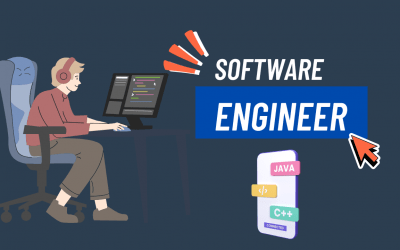1. Foundational Principles of C# Coding Excellence
1.1 Understanding SOLID Principles in C# Context
The SOLID principles constitute the cornerstone of exemplary C# coding practice, serving as immutable guidelines that elevate code quality exponentially. These five fundamental tenets—Single Responsibility, Open/Closed, Liskov Substitution, Interface Segregation, and Dependency Inversion—form the bedrock upon which maintainable applications are constructed.
Single Responsibility Principle mandates that each class should possess one compelling reason to change. In C# development, this translates to creating cohesive classes that encapsulate specific functionality without venturing into tangential domains. Consider a UserService class that exclusively handles user-related operations rather than conflating authentication, logging, and data persistence responsibilities.
The Open/Closed Principle advocates for entities that remain open for extension while closed for modification. C# developers can leverage abstract classes, interfaces, and inheritance mechanisms to achieve this architectural flexibility. By designing extensible frameworks, applications can accommodate future requirements without compromising existing functionality.
Liskov Substitution Principle ensures that derived classes can seamlessly replace their base classes without altering program correctness. This principle proves particularly crucial when implementing inheritance hierarchies in C#, as it guarantees behavioral consistency across polymorphic implementations.
1.2 Embracing the .NET Framework Conventions
Microsoft’s .NET Framework establishes comprehensive conventions that standardize C# development practices across diverse project contexts. Adherence to these conventions facilitates code interoperability, enhances team collaboration, and streamlines the development lifecycle significantly.
The Framework Design Guidelines provide explicit recommendations for API design, emphasizing consistency and usability. These guidelines encompass everything from method naming patterns to parameter ordering conventions, ensuring that C# codebases maintain professional standards and intuitive interfaces.
Namespace organization follows hierarchical patterns that mirror functional boundaries within applications. Proper namespace structuring prevents naming conflicts while providing logical groupings that enhance code discoverability and maintainability. The convention of using company or project names as root namespaces establishes clear ownership and prevents global namespace pollution.
1.3 Memory Management and Garbage Collection Optimization
C#’s managed memory environment abstracts low-level memory allocation concerns while providing sophisticated garbage collection mechanisms. Understanding these underlying processes enables developers to write more efficient code that minimizes memory pressure and optimizes application performance.
The garbage collector operates through generational collection strategies, categorizing objects based on their lifespan expectations. Short-lived objects reside in Generation 0, while long-lived objects eventually migrate to Generation 2. This stratified approach optimizes collection frequency and reduces overall memory management overhead.
Developers can influence garbage collection behavior through careful object lifecycle management. Implementing the IDisposable interface for resource-intensive objects ensures timely cleanup of unmanaged resources. The usingstatement provides automatic disposal semantics, guaranteeing resource cleanup even in exceptional circumstances.
2. Naming Conventions and Code Readability
2.1 Pascal Case and Camel Case Implementation
C# employs distinctive casing conventions that enhance code readability while maintaining consistency across different identifier types. Pascal casing applies to public members, types, and namespaces, capitalizing the first letter of each word without separators. This convention creates visually distinctive identifiers that clearly communicate their public accessibility.
Camel casing governs private fields and local variables, utilizing lowercase initial letters followed by capitalized subsequent words. This subtle distinction allows developers to immediately recognize variable scope and accessibility levels through visual inspection alone.
Method names invariably employ Pascal casing, reflecting their status as public contract elements. Parameters utilize camel casing, creating a clear hierarchical distinction between method signatures and their internal implementations. This consistent application of casing rules eliminates ambiguity and enhances code comprehension across development teams.
2.2 Meaningful Identifier Selection
Identifier nomenclature significantly impacts code maintainability and developer productivity. Descriptive names that accurately convey purpose and context eliminate the need for extensive documentation while making code self-documenting and intuitive.
Variable names should articulate their intended usage without resorting to cryptic abbreviations or overly verbose descriptions. The principle of semantic clarity guides optimal identifier selection, balancing brevity with descriptive accuracy. A variable named customerOrderHistory immediately communicates its purpose more effectively than abbreviated alternatives like custOrdHist.
Boolean variables benefit from interrogative or assertive naming patterns that clearly indicate their true/false nature. Prefixes such as “is,” “has,” or “can” create natural language constructs that enhance code readability. For instance, isUserAuthenticated provides immediate semantic clarity compared to ambiguous alternatives.
2.3 Namespace Organization Strategies
Namespace hierarchies provide logical organization that reflects application architecture and functional boundaries. Well-structured namespaces facilitate code discovery, prevent naming conflicts, and establish clear ownership boundaries across different modules and components.
The conventional namespace structure follows the pattern CompanyName.ProjectName.FunctionalArea.SubModule, creating a hierarchical organization that scales effectively with application complexity. This structure enables developers to locate specific functionality quickly while maintaining clear separation between distinct application domains.
Namespace aliases provide elegant solutions for resolving naming conflicts without compromising code clarity. The using directive with alias assignment allows developers to reference types with shortened identifiers while maintaining full qualification when necessary. This technique proves particularly valuable when integrating third-party libraries with overlapping type names.
3. Object-Oriented Programming Mastery
3.1 Encapsulation and Access Modifier Usage
Encapsulation represents one of object-oriented programming’s fundamental pillars, providing controlled access to object internals while maintaining interface stability. C# offers comprehensive access modifiers that enable fine-grained control over member visibility and accessibility across different contexts.
The private access modifier restricts member access to the containing class exclusively, providing the highest level of encapsulation. Private members serve as implementation details that can evolve independently without affecting external dependencies. This encapsulation enables refactoring and optimization without compromising existing functionality.
Protected access facilitates inheritance scenarios while maintaining encapsulation principles. Protected members remain accessible within class hierarchies while restricting access from external contexts. This balanced approach enables polymorphic behavior while preserving implementation hiding.
Public members constitute the class’s external interface, requiring careful design consideration due to their visibility and accessibility. Public APIs should provide stable, intuitive interfaces that abstract underlying complexity while offering necessary functionality. Changes to public members potentially impact dependent code, necessitating versioning and compatibility considerations.
3.2 Inheritance Hierarchies and Polymorphism
Inheritance enables code reuse and establishes “is-a” relationships between related classes. C# supports single inheritance for classes while permitting multiple interface implementation, providing flexibility without the complexity associated with multiple inheritance models.
Abstract classes define incomplete implementations that require derived class completion. Abstract methods establish contracts that concrete implementations must fulfill, ensuring consistent behavior across inheritance hierarchies. This approach combines code reuse with enforced implementation requirements.
Polymorphism allows objects of different types to be treated uniformly through common interfaces or base classes. Virtual methods enable runtime method resolution, allowing derived classes to override base class behavior while maintaining interface compatibility. This dynamic dispatch mechanism forms the foundation of flexible, extensible object-oriented designs.
3.3 Interface Segregation and Dependency Injection
Interface segregation principle advocates for focused, cohesive interfaces that avoid forcing clients to depend on unnecessary functionality. Large, monolithic interfaces violate this principle by creating unwanted dependencies and reducing implementation flexibility.
Dependency injection provides a mechanism for supplying object dependencies externally rather than creating them internally. This inversion of control enhances testability, reduces coupling, and enables configuration-driven object composition. Constructor injection represents the most straightforward implementation approach, explicitly declaring dependencies through constructor parameters.
Interface-based design enables polymorphic behavior while maintaining loose coupling between components. By programming against interfaces rather than concrete implementations, applications achieve greater flexibility and testability. This approach facilitates unit testing through mock implementations and enables runtime configuration of object behaviors.
4. Error Handling and Exception Management
4.1 Structured Exception Handling Patterns
Exception handling in C# provides robust mechanisms for managing exceptional conditions while maintaining application stability. The try-catch-finally construct enables controlled error recovery with guaranteed cleanup execution, regardless of exception occurrence.
Specific exception types should be caught rather than employing broad exception handlers that mask underlying problems. Catching ArgumentNullException specifically demonstrates intentional handling of null reference scenarios, while generic Exception handlers may inadvertently suppress critical errors that require immediate attention.
The finally block ensures critical cleanup operations execute regardless of exception occurrence. Resource disposal, connection cleanup, and state restoration belong in finally blocks to guarantee execution even when exceptions propagate up the call stack.
4.2 Custom Exception Implementation
Custom exceptions provide domain-specific error information that enhances debugging and error reporting capabilities. Well-designed custom exceptions inherit from appropriate base classes while providing additional context relevant to specific application domains.
Exception constructors should follow standard patterns, accepting message strings, inner exceptions, and serialization information. This consistency enables seamless integration with existing exception handling infrastructure while providing necessary contextual information for troubleshooting.
Exception messages should provide actionable information that assists developers in diagnosing and resolving issues. Generic error messages offer limited value, while specific descriptions that include relevant parameter values and context information accelerate problem resolution significantly.
4.3 Logging and Diagnostic Techniques
Comprehensive logging strategies provide visibility into application behavior while facilitating troubleshooting and performance monitoring. Structured logging with appropriate severity levels enables effective filtering and analysis of application events.
Diagnostic information should include sufficient context to recreate problematic scenarios without overwhelming log consumers with excessive detail. Correlation identifiers help trace request flows through complex systems, while performance metrics provide insights into application efficiency.
Exception logging should capture complete stack traces, parameter values, and environmental information that aids in problem reproduction. However, sensitive information such as passwords or personal data must be excluded from log entries to maintain security compliance.
5. Performance Optimization and Best Practices
5.1 Algorithmic Efficiency Considerations
Algorithm selection significantly impacts application performance, particularly when processing large datasets or executing time-critical operations. Understanding algorithmic complexity enables informed decisions about data structure selection and processing approaches.
Big O notation provides a standardized method for analyzing algorithm efficiency across different input sizes. Linear algorithms (O(n)) scale proportionally with input size, while quadratic algorithms (O(n²)) may become prohibitive for large datasets. Choosing appropriate algorithms based on expected input characteristics prevents performance degradation.
Data structure selection influences operation efficiency dramatically. Hash tables provide O(1) average-case lookup performance, while linear searches through arrays require O(n) time complexity. Understanding these trade-offs enables optimal data structure selection for specific use cases.
5.2 Memory Allocation Strategies
Memory allocation patterns significantly impact application performance and garbage collection pressure. Understanding allocation behaviors enables developers to write more efficient code that minimizes memory churn and reduces collection overhead.
Value types allocated on the stack generally provide better performance than reference types allocated on the managed heap. However, boxing operations that convert value types to reference types incur allocation overhead and should be minimized in performance-critical scenarios.
Object pooling techniques can reduce allocation pressure by reusing objects rather than creating new instances repeatedly. This approach proves particularly effective for frequently created objects with expensive initialization costs or large memory footprints.
5.3 Asynchronous Programming Patterns
Asynchronous programming enhances application responsiveness by preventing blocking operations from freezing user interfaces or consuming thread pool resources unnecessarily. The async/await pattern provides intuitive syntax for asynchronous operations while maintaining readable code structure.
Task-based asynchronous operations enable concurrent execution of independent operations, improving overall application throughput. Proper task composition through Task.WhenAll and Task.WhenAny enables efficient coordination of multiple asynchronous operations.
ConfigureAwait(false) prevents deadlock scenarios in library code by avoiding synchronization context capture. This optimization proves crucial for library developers who cannot control the calling context but must ensure reliable asynchronous behavior across different hosting environments.
Understanding these fundamental C# coding practices enables developers to create maintainable, efficient, and professional applications that leverage the full capabilities of the .NET ecosystem while adhering to industry best practices and conventions.
Other Articles
The Art and Science of Prompt Engineering: Crafting the Future of AI Interaction
Beyond Keywords – Defining Prompt Engineering We stand at the precipice of a new paradigm in human-computer interaction. The rise of sophisticated Large Language Models (LLMs), such as GPT-4 and its contemporaries, has shifted our communication with technology from...
What is a Software Engineer
The Architects of Digital Reality Software engineers constitute the fundamental workforce orchestrating our technologically mediated existence. These professionals transmute abstract concepts into functional applications that permeate every facet of contemporary life....
Angular TypeScript: A Comprehensive Guide to Modern Web Development
Introduction to Angular TypeScript Integration Angular's symbiotic relationship with TypeScript represents a paradigmatic shift in modern web development methodologies. This powerful amalgamation emerged from Google's recognition that large-scale applications require...




